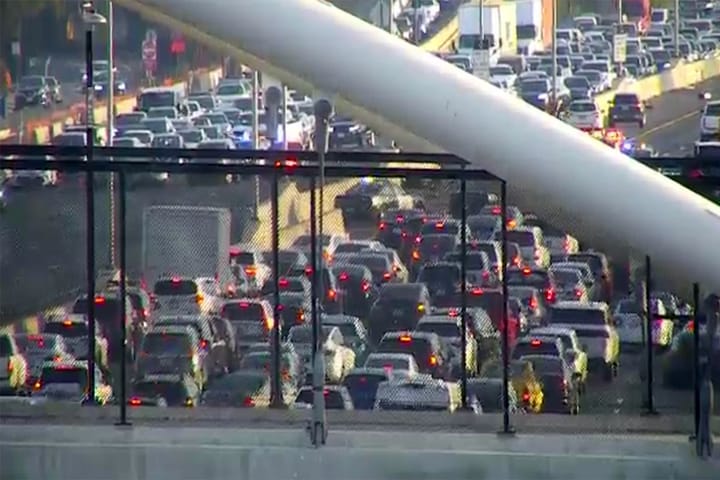New survey supports a strong Berkeley Bike Plan: Op-ed
The authors commissioned a professional poll from a nonpartisan research agency to learn more about what Berkeley wants in its bike infrastructure.
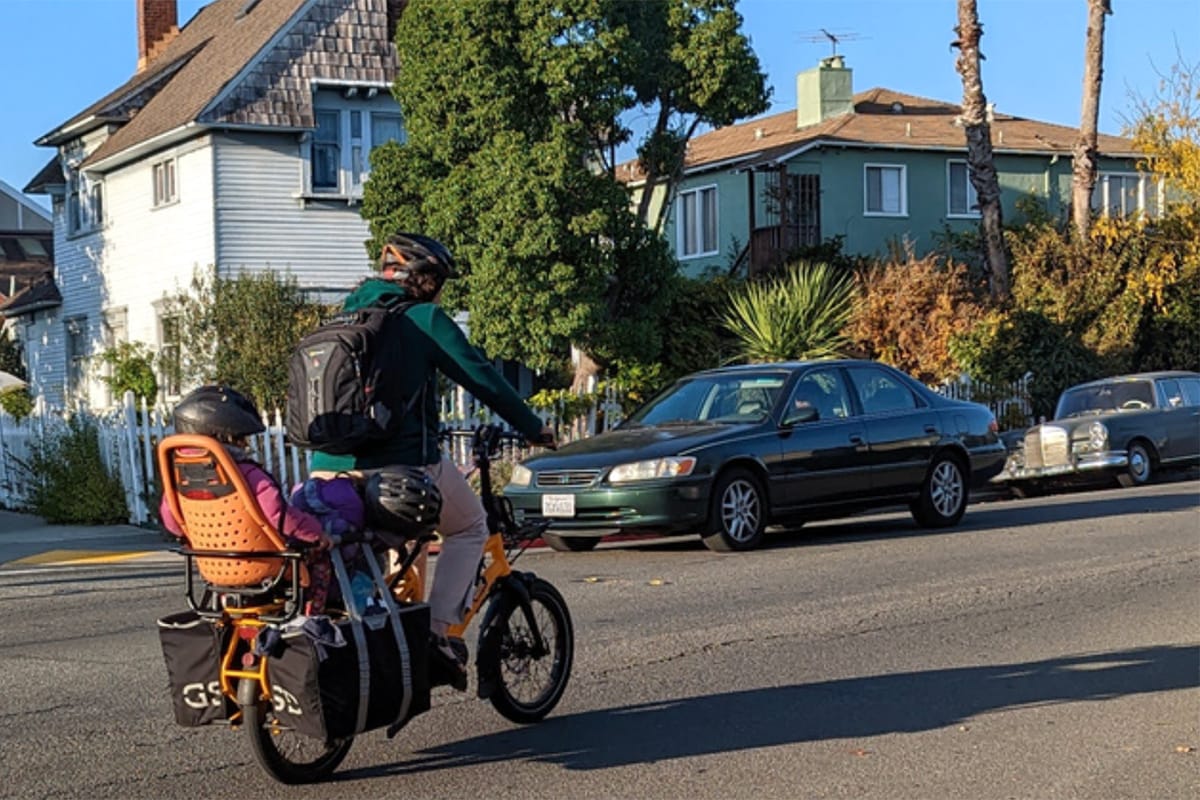
Editor's Note: The Scanner will periodically publish guest essays from community members on issues of interest or concern. Today's piece was submitted by Libby Lee-Egan and Marc Hedlund, Berkeley residents and advocates for bicycle infrastructure improvements across the city.
Now that the city is revising the Berkeley Bike Plan, we can expect to hear the same objection that we have heard before to individual bicycle improvements. A small but very noisy group of people has said over and over that safety for bicyclists is not important because bicyclists are a tiny, marginal minority.
A new poll of Berkeley’s attitudes toward biking and bike infrastructure belies this claim and shows that the vast majority of the people of Berkeley, in every area of the city, support expanding bicycle infrastructure.
There was intense controversy over a recent proposal for protected bike lanes on Hopkins Street, which caused turmoil among city staff members and on the Berkeley City Council. An article in Berkeleyside said bicycling had turned into a "culture war." The very vocal opposition to this proposal gave some people the impression that proposals for bike lanes are divisive.
We had cause to wonder, too. We have pushed for better and safer bike infrastructure across Berkeley, and Libby, a resident of Hopkins Street, has watched the battle from a front-row seat.
We knew we supported better bike infrastructure, but we were not certain how much of Berkeley agreed with us.
Was it just a narrow minority, as some have claimed? They called us everything from the "radical bike lobby" (a name we happily adopted) to a "narrow special interest group" (which rankled).
With all the name calling, we had to wonder whether what we saw happening in our streets — more and more people riding themselves and with their families —was representative of broad demand for bike infrastructure.
To answer this question for ourselves, we commissioned a professional poll, employing the nonpartisan research agency Embold Research to do the polling. Marc had worked with the firm previously and liked its diligence and methodology — using online sampling rather than cold calls.
Embold was able to get responses that closely matched Berkeley’s overall demographics and geography — getting opinions from every council district and area (only 94720, on and around the Cal campus, fell a little short of a full sample).
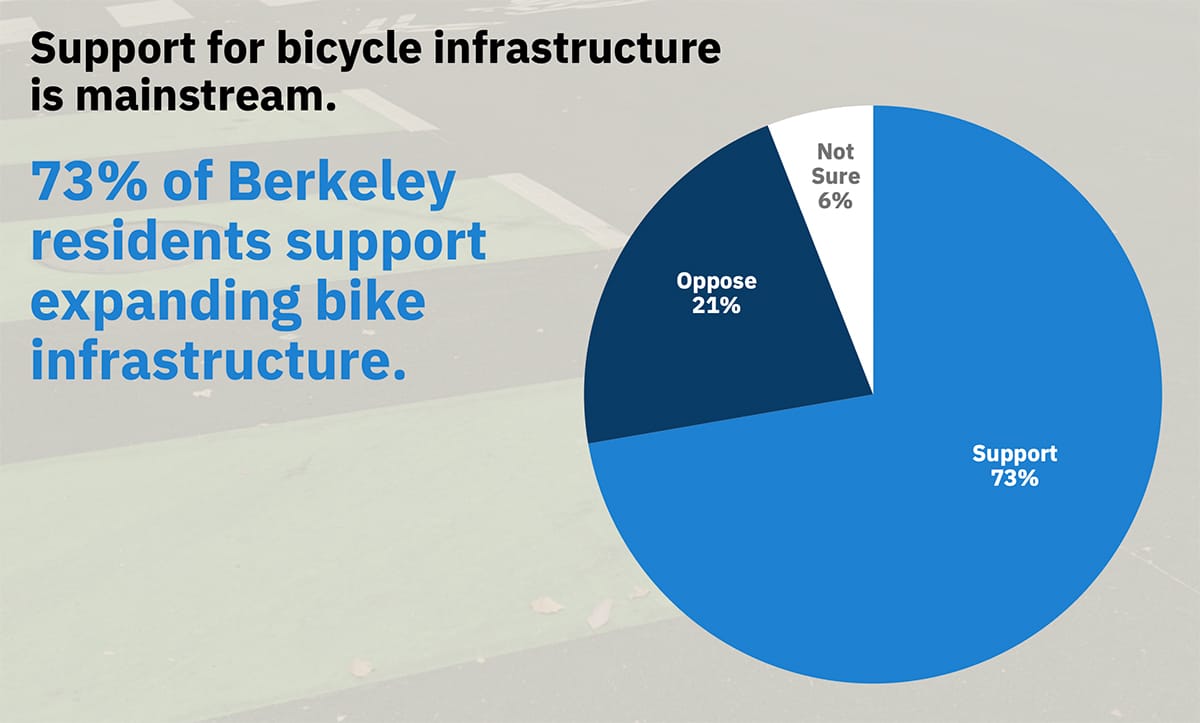
The results were stark and surprisingly clear. They show that, far from being marginal, support for bicycle infrastructure is mainstream. Here are some key results:
- 73% of Berkeley residents support expanding bike infrastructure. There is a strong majority supporting this across every part of the city — even across the Hopkins district and in the Berkeley Hills.
- 57% of people who do not bike themselves and do not want to or cannot bike still support expanding our bike infrastructure.
- 27% of Berkeley residents bike regularly today.
- Another 27% of residents would bike if we made our bike infrastructure safer — doubling current use.
- To feel safer, residents want (1) off-street paths (91%), (2) concrete-protected bike lanes (86%) and (3) parking-protected bike lanes (74%). Posts or paint are not enough.
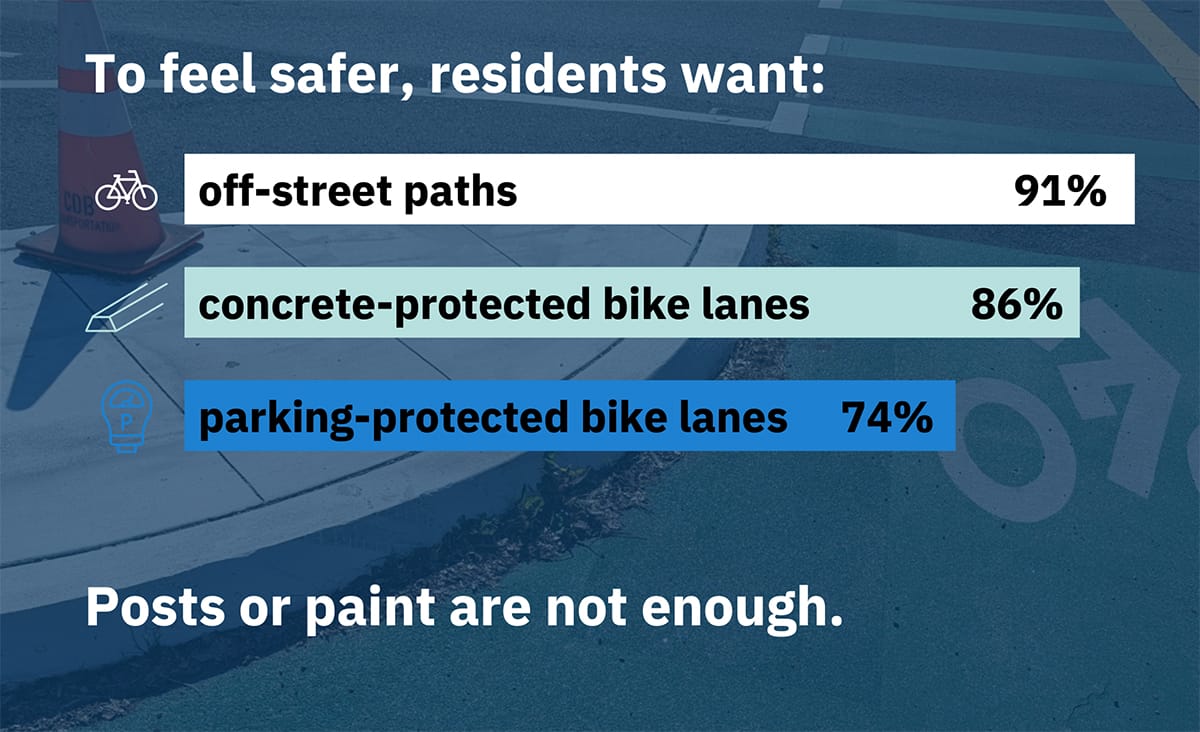
These results clearly support arguments bike advocates have been making to the City Council for years. We are the large majority and the opposition is the narrow minority. There is a lot of untapped demand for cycling.
Many people want to bike but don’t because they are worried about our unsafe streets. They believe that protected pathways for biking will make it possible for them to get themselves and their families out on bikes.
We got the initial poll results in October, so we were not surprised by the election results in November. Two competing revenue measures were on the ballot. Measure FF funded both paving and safety improvements. Measure EE funded paving, allocated some funds that might be spent on safety, and sent out a mailing that prominently featured a picture of a protected bike lane and asked voters to back EE because it would not fund protected bike lanes.
"People who want safe streets for everyone, including bicyclists and pedestrians, are the clear majority."
The voters made their decision. Measure FF won with about 60% of the vote while Measure EE fell short of a majority, with 46% voting yes.
These results align with the results of the poll. Most of Berkeley agrees that we need better-paved streets, so many voted for both initiatives. The clear majority want the streets to be safer for all, including pedestrians and those on bikes.
Berkeley would not be Berkeley without disagreement. The poll showed that 10% of residents are strongly opposed to bike lanes, and another 11% are somewhat opposed, adding up to a small minority, just 21%.
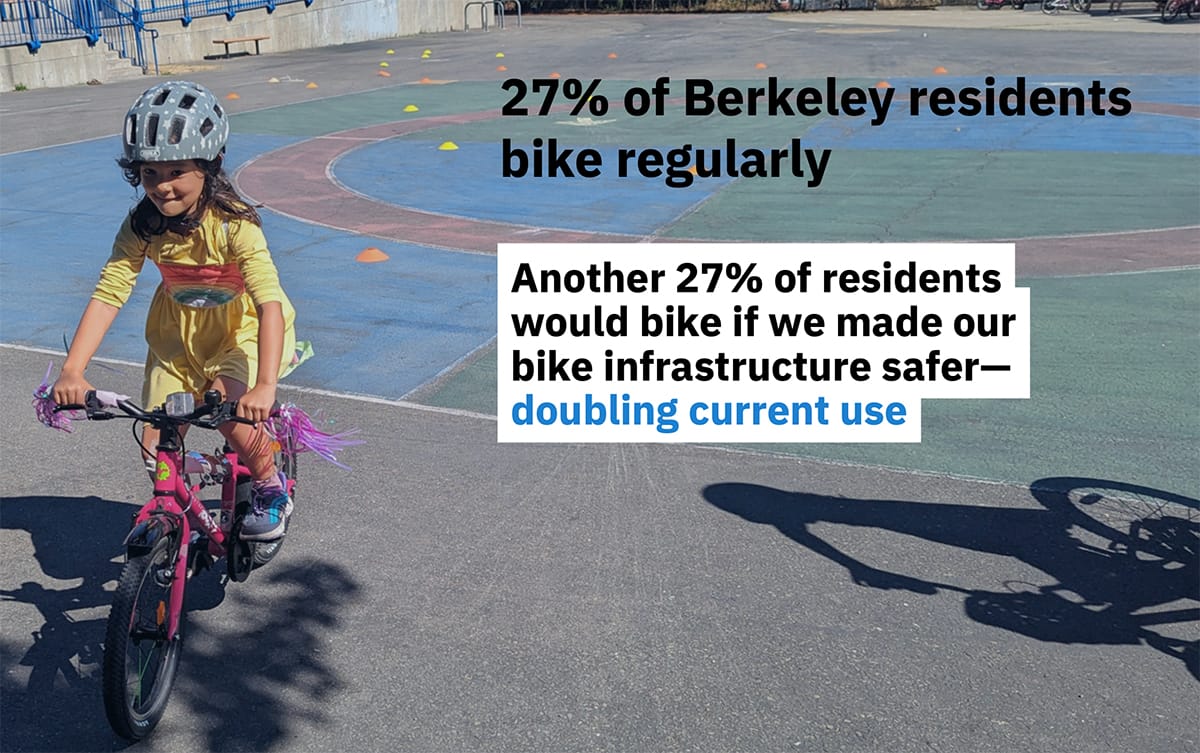
These poll results, along with the clear victory of Measure FF over Measure EE, should end the debate over who is the narrow interest group. People who want safe streets for everyone, including bicyclists and pedestrians, are the clear majority. Anti-safety, anti-bike-lane advocates are a small marginal group who want to protect their own self-interest at the expense of vulnerable street users.
The City Council should listen to this message when it acts on the revised Bike Plan. The Council should pass a strong bike plan and should allow streamlined approval of safety projects rather than having years of community meetings over each improvement, which have slowed implementation of the 2017 Bike Plan and canceled or delayed badly-needed projects.
Better bicycle infrastructure benefits everyone. If we can build a network of secure bikeways, we will protect the 27% of Berkeley that bikes now, and attract the 27% of residents who want to bike but do not because of fears about safety. We would reduce traffic congestion, reduce noise, make our air cleaner, make our streets safer and help meet our climate goals.
Review the memo from the polling firm detailing the results. And here's the methodology. The authors thank Charles Siegel and Embold Research for their support of this work.
The Scanner will periodically publish guest essays from community members on issues of interest or concern. Submit your guest essay ideas to TBS.




